
Dilip Doshi, ex India cricketer, adds the spin to the Lamy story as CEO, AMBiAR!
We have all heard about Lamy, the famous German brand of writing instruments. We may have experienced some of their famous writing instruments and may even own some ourselves. Today this family company from Heidelberg belongs to the set of leading German manufacturers of exclusive writing instruments and markets its products all over the world.
When we heard that Lamy was holding their World Conference of distributors in Mumbai, India, and that their leadership team would be visiting India, we jumped at the thought of interviewing them and having an opportunity to hear from them first-hand about Lamy in general and their plans for fountain pens and the India market.
Lamy in India is represented by the AMBiAR group as their sole distributors.
As the team was visiting Mumbai, I reached out to the Fountain Pen Association of India to talk to the representatives from Lamy and AMBiAR on behalf of Inked Happiness.

Participants in this discussion were:
| Representing Lamy |
| Thomas Trapp, Managing Director (International Sales), Karl Siegel, Export Sales Manager, and, Isabel Bohny, Head of International Marketing . |
Representing AMBiAR GROUP
Dilip Doshi, CEO.
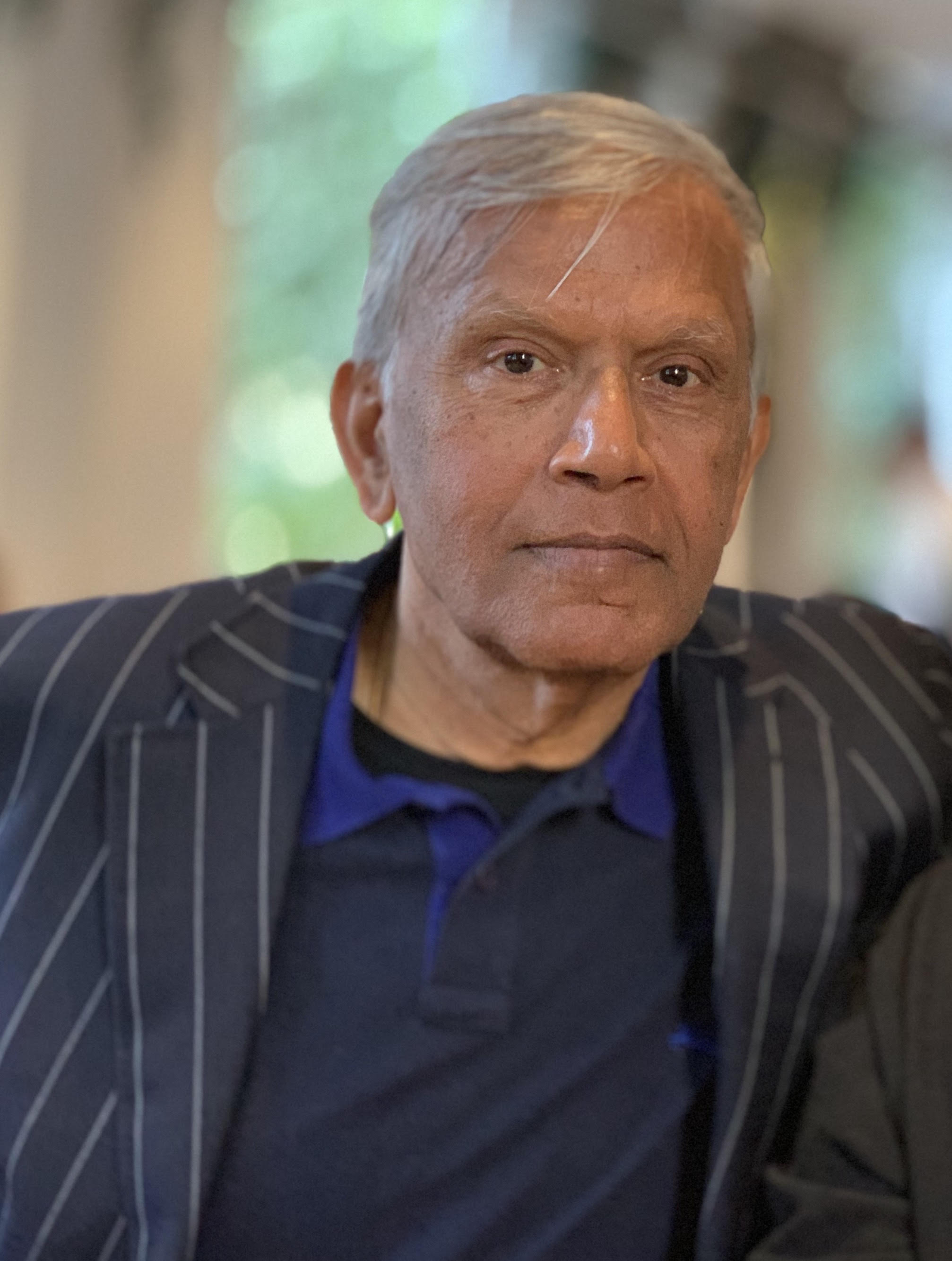
| Representing FPAI and Inked Happiness |
| Sudhir Kalyanikar, Pradeep Dubbula, and, Mihir Govilkar |

Sudhir Kalyanikar 
Mihir Govilkar 
Pradeep Dubbula
FPAI: Lamy as a brand has been around for a long time – since 1930. Could you tell us something about how the company and the brand has evolved over the decades?
Lamy: Yes, Lamy was founded in 1930. C. Josef Lamy, who up until then had worked as an export and branch manager for an American writing instrument manufacturer, set up his own business in Heidelberg, the Orthos Füllfederhalter-Fabrik.
Our first significant pen was the streamlined LAMY 27 fountain pen introduced in 1952, which with its innovative “Tintomatik” system ensured a smooth and clean flow of ink.
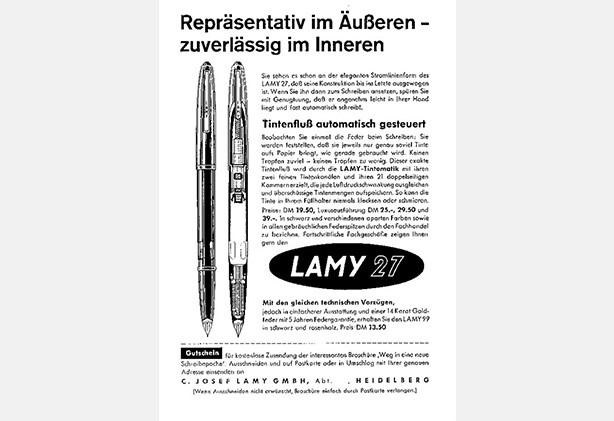
The year 1966 was a watershed year for us. This was when we introduced the iconic Lamy 2000, the brainchild of Dr. Manfred Lamy, son of the founder.
Dr. Lamy was fascinated by brands such as Braun and Olivetti which had already setting pioneering standards in product design at that time. So, when a short time later, he met former Braun designer, Gerd A. Müller, it was almost as if fate was writing the history books.
They soon set up a joint project: designing a fountain pen based on the Bauhaus tradition.
The LAMY 2000 was launched in autumn 1966. This new fountain pen was revolutionary in several respects: unlike writing instruments from other brands, it featured no material surplus or design gadgets.
Based on the Bauhaus principle of “form follows function” it focused on practical function and thus laid the foundation for the clear design language which still forms the basis for all Lamy writing instruments.
The LAMY 2000 also set new standards in terms of workmanship, as the material combination of matt-ground stainless steel and Makrolon (polycarbonate) was very challenging to work with and completely new in the mid-sixties.
Over the years, Lamy has since grown into the brand that we all recognize and love for no-nonsense writing instruments. You will not find any unnecessary ornamentation or unnecessary opulence in Lamy pens. So, every single Lamy writing instrument is easily recognized as being timelessly modern.

FPAI: You are headquartered in Heidelberg and seem to have stores in every major city in the world.How large is the company, exactly?
Lamy: Correct. Lamy’s headquarters are in Heidelberg district of Wieblingen in Germany since 1930. We moved to our current location in 1957.


We have around 380 plus employees worldwide and all the core functions like production, logistics, sales, finance, accounting, etc. are handled directly from our HQ in Germany. We are and will always remain 100% Made in Germany.
Lamy has
- 200 models of writing instruments
- 26 product collections
- 9 Million writing instruments produced per year
- Present in more than 80 countries
- Received more than 100 design awards
Lamy works through its distributors in all the countries it is present in and the distributors are like an extended family. There are no legal subsidiaries in any countries.
In terms of our sales, the top 5 countries are
- Germany
- China
- Japan
- Korea
- USA
India is very close to the top 10.
It helps that countries like Japan, China, Russia, India, etc. have a long history and tradition of writing with analogue instruments.

FPAI: One of the things we notice when we see pens from different parts of the world is how the native culture of the country of origin seems to play a critical part.How much German culture does Lamy exude? How much of this is deliberate and how much is incidental?And what drives Lamy to do what it is doing?
Lamy: The German culture is very much present in Lamy. We have already talked about the Bauhaus principle of form following function.
We are at heart, a family owned company, so we are not in this business to make quick dollars. Our aim is to provide the best writing instruments at fair and reasonable prices. We are a small, niche brand, not part of a huge conglomerate and we work with a philosophy that does not compromise on quality.
Also, we are here for the long run, so we tend to think in decades, rather than in quarters.
Dilip Doshi – Like most German companies, Lamy also focuses on delivering a dream, and they go about this in a very deliberate way. One of the things we have learned from them is to have a discipline by which you get to the target. There is no compromise in quality and these ‘Made in Germany’ products have a trust and goodwill that was not built overnight.
This is why even with a small, niche brand like Lamy, the trust levels are immensely high. The whole approach is very matter-of-fact, and the intent is, “we do not want you to pay for what you do not need.”
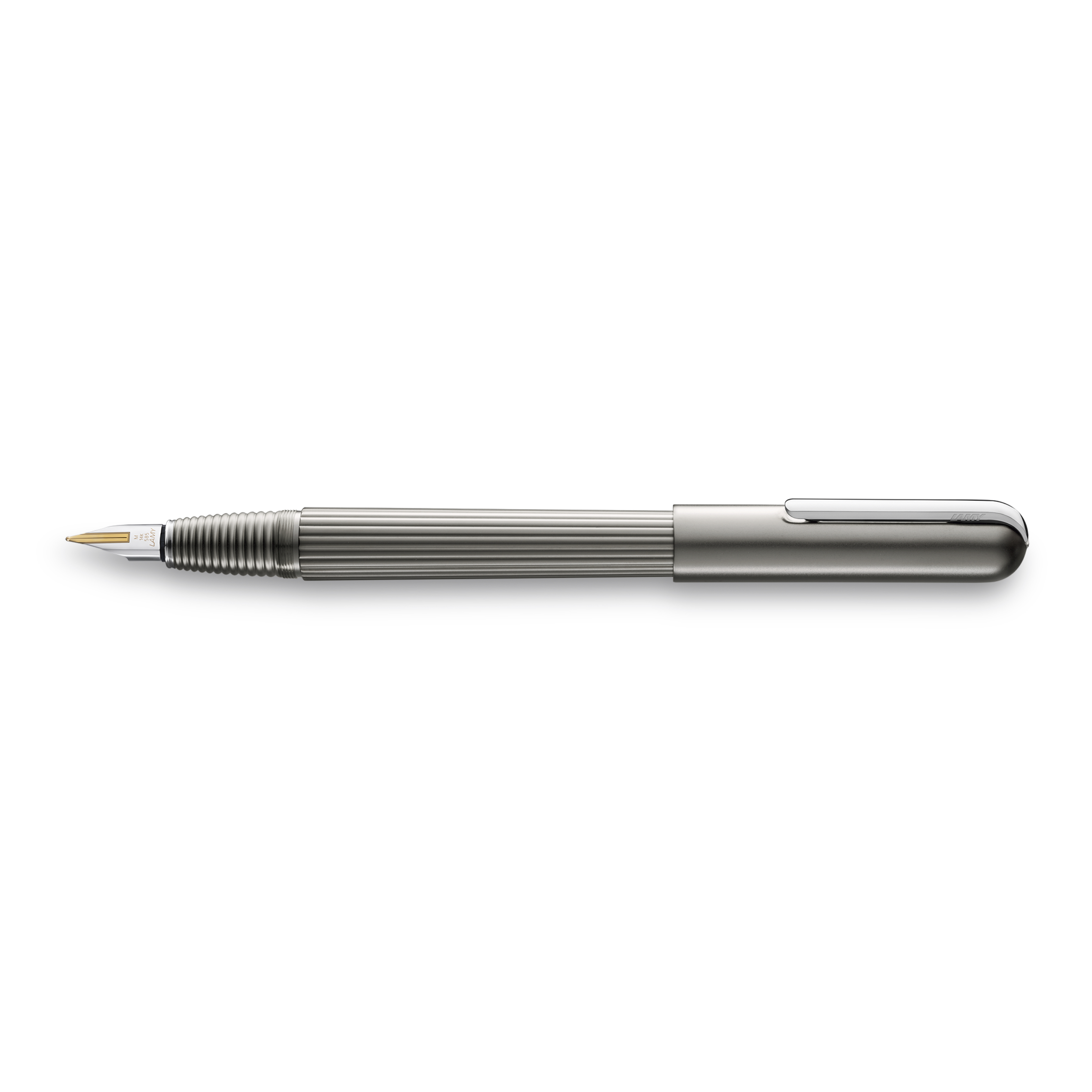
FPAI: What are the steps Lamy is taking to make the products and the production process more sustainable?
Lamy: Sustainability is a very important consideration for us. We run several programs across our production process like waste water recycling, solar power, maximum recycling of material, minimizing the Carbon footprint.
This extends to our products too, none of the Lamy products are single-use products and we make our products to last. We produce almost all components ourselves. As such, we manufacture, for example, all plastic parts – including Lamy ink cartridges – in our internal injection moulding hall. Likewise, the large-capacity ballpoint refills and all springs, whether steel or gold, are produced in-house.
Did you know that an average of around three quarters of the manufacturing time for a Lamy writing instrument goes into manual work? Despite increasing automation, manual detailed work is vital at Lamy. It complements mechanical production processes where special care and skill are required.
Before a writing instrument leaves our production, it undergoes strict quality control. This is done both through automated processes in the course of final assembly and by human eye; aspects such as appearance, colour, gloss level and function of each individual writing instrument undergo final checking under the trained eye of qualified staff.
What is it that holds a company together? It is a common attitude, a point of view – definite values. For Lamy, one value of great importance is responsibility. It guides the company in how it thinks and acts.
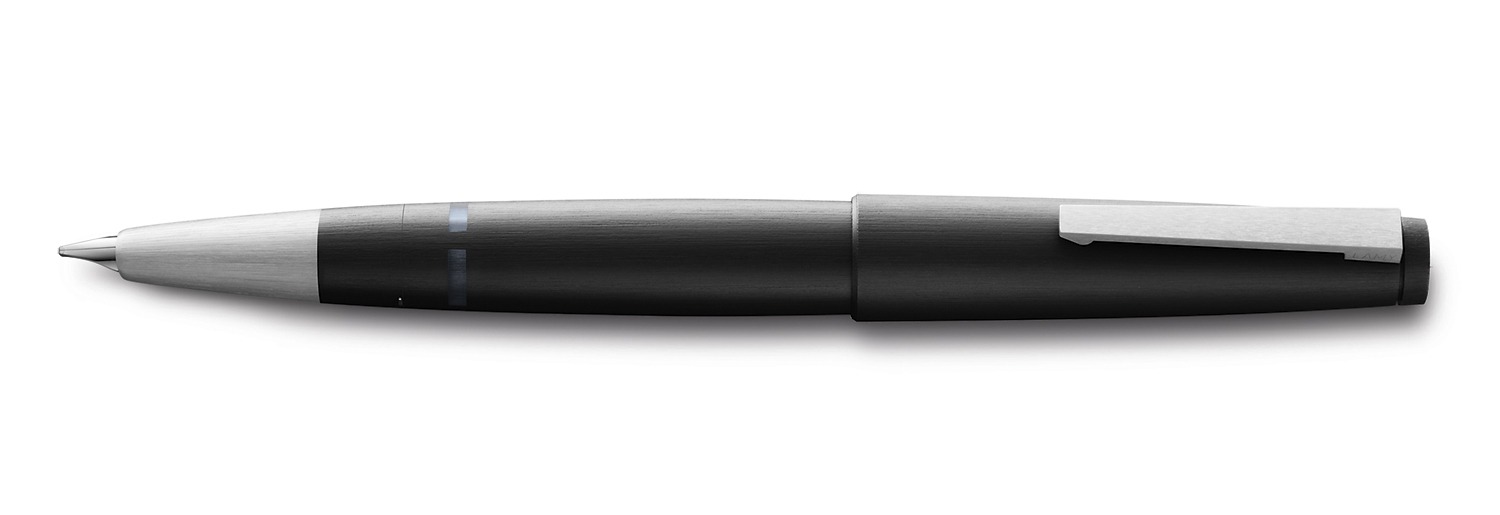
So Lamy makes sure that all materials and manufacturing processes are continuously checked for their environmental compatibility, that all remaining materials and supplies are sorted and recycled and that consumption of primary energy and water is reduced as much as possible (rainwater is used where possible). When it comes to transport routes – or detours – Lamy also has a clear point of view: Not only are all products manufactured exclusively in Germany, it is standard practice that all subcontractors and materials are from Germany as well.
Equally important to the company is social responsibility in the community. Lamy is proud of not having any perceptible fluctuation. Stable working relationships with employees, subcontractors and business partners is one of the company’s central pillars – as is the strong connection to the Heidelberg location.
This is the environment in which Lamy produces its long-lasting writing instruments. Writing instruments that can also be repaired if damaged, by the way – Lamy has never and will never make disposable products.
FPAI: Recently, we have seen some Dialog 3 pens with Urushi/Maki-e work on them. Do you think this, in any way, deviates from your simplistic design philosophy?
Lamy: The Dialog 3 pens with Urushi/Maki-e work represent the perfect connection of timeless design and superb craftmanship. So, they are a natural extension of our product line and a statement of our premium strategy. We aim to make these available at the most reasonable price possible to give the best value for money.
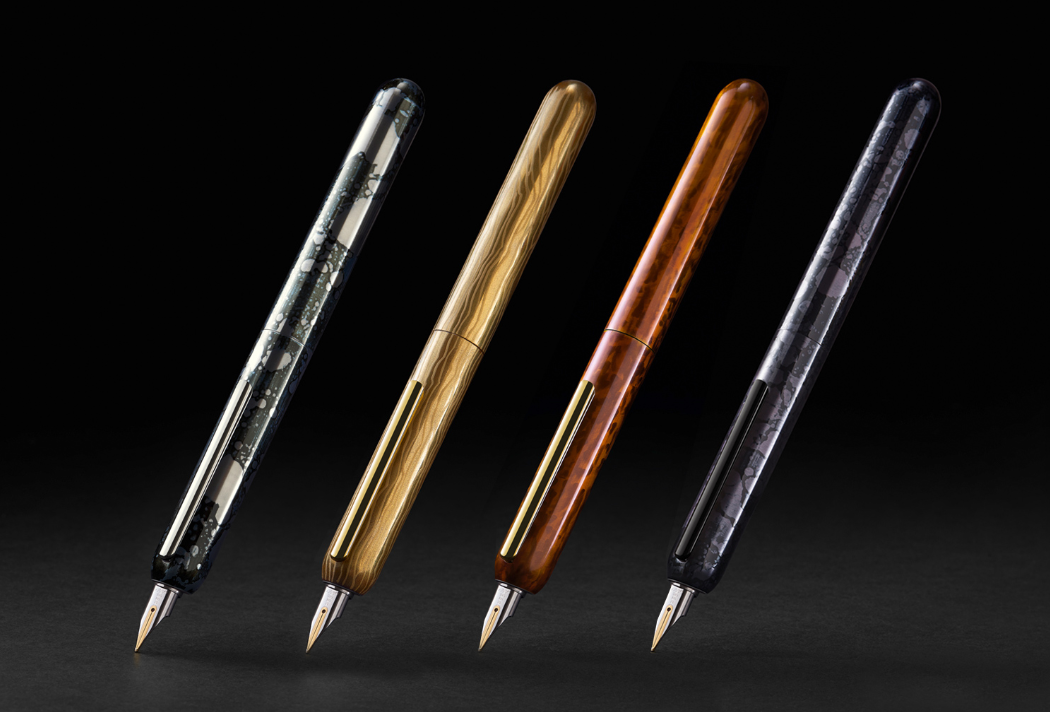
Urushi is a material full of contrasts. This natural lacquer which has been used in East Asian arts and crafts for millennia is distinguished by its exceptional sheen and unique depth of colour which is created through the application of many, very thin layers. The LAMY dialog Urushi edition which is limited to 33 sets captures the fascination of this characterful material in a unique tetralogy.

Each of the 33 sets includes four elegantly finished fountain pens – four interpretations of the LAMY dialog 3. The guiding theme of the LAMY dialog Urushi edition is a subject which is as timeless as it is universal: the four seasons with their own individual moods. Spring, summer, autumn and winter as the symbol for the eternal cycle of life.
The edition has been designed and artistically realised by Urushi masters Norihiko Ogura from Japan (summer) and Manfred Schmid from Germany (spring, autumn and winter).
FPAI: The key aspect for Lamy has been the emphasis on design.How does the process work – right from ideation/conception to getting the pens in retail stores?
Lamy: Writing instruments from Lamy have their own unmistakable design language. A Lamy is a Lamy – and you can see it! The reason for this is the characteristic Lamy design, which is based on clear design language and a consistent focus on practical utility.
No design element is accidental but rather always developed from the function. Consequently, writing instruments from Lamy are not fashionable but always modern – and therefore timeless.
Our focus has been on Functional Design – the Bauhaus principle of Form follows Function. We first formulated and implemented this design philosophy in 1996.
This was the year when the LAMY 2000 came onto the market. The fountain pen defined the design guidelines that apply to this day: reduced in form but complete in function. Since then, all writing instruments from Lamy have been developed according to this principle of functional design – a LAMY Safari as much as a LAMY Pico or LAMY Scala.
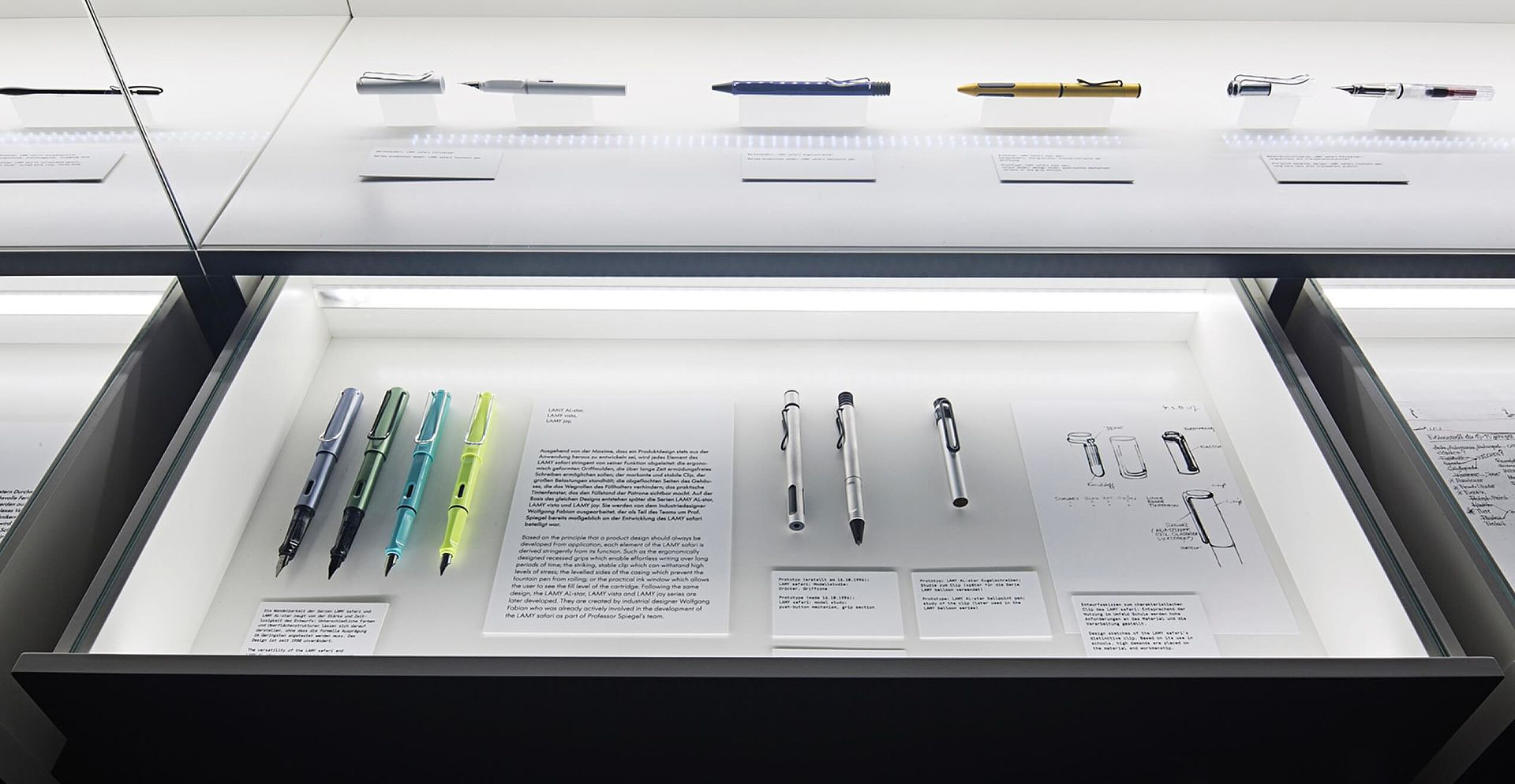
One other thing we would like to highlight is the “Thinking Tools” exhibition that was held in Frankfurt and Japan in 2016, 2017, and 2018.
Thinking Tools. Design as a process – how writing instruments are created
The international exhibition provides insights into the design and creation of Lamy writing instruments, with artistic contributions from Christoph Niemann.
“Thinking Tools” documents the design process at Lamy using original prototypes, models, sketches and drafts from the Lamy archive in Heidelberg. For the exhibition, many of these artefacts have been exhibited, viewed, documented, and opened to the public for the first time.
This exhibition is a collaboration of Lamy with Christoph Niemann whose artistic contributions are a particular highlight of the exhibition. In these, the prestigious illustrator, whose works are featured in The New Yorker, Wired, Time Magazine and blog column Abstract Sunday in the New York Times, has focused on illustrating creative thought and development processes.
His drawings and installations complement the exhibition with humorous statements about the meaning of writing instruments as “Thinking Tools”: as tools that help us to capture and form our thoughts.
On the one hand, the exhibits demonstrate the many stages that lie between concept, draft and realisation. On the other hand, they illustrate the marked complexity of the design process: this involves many people and demands close, continuous communication between corporate management, design, technology and marketing.
FPAI: Lamy has, in the past, worked with some iconic designers.Which experience among these has been the most memorable?
Lamy: Lamy does not design anything in-house. All Lamy products are always developed in cooperation with prestigious international designers and design studios, for example including Franco Clivio, Naoto Fukasawa, Sieger design and Jasper Morrison.
Working with these designers is both exciting and challenging as they bring in their international exposure and best-in-the-class standards, but are really independent-minded in their own way.
While all the designs have been great, the one that stands out most because of the complexity is the design for the Dialog 3.
The LAMY dialog 3 is a unique twist-action fountain pen. It is a ground-breaking capless fountain pen with retractable nib and clip. Half a turn and the sophisticated 14 carat gold nib glides out of the pen while the massive clip retracts onto the barrel. The LAMY dialog 3 represents a successful symbiosis of the most innovative writing instrument technology and the most progressive design of our time.
It is said to have more moving parts and a more complex mechanism than a Swiss watch, so it was really a memorable product for us.
After all, the design of a pen is actually more complex than designing, say, a washing machine or a car or a house!
The Dialog 3 was designed by Franco Clivio and the whole process from design to the final product took 5 years.
FPAI: You just opened a flagship store in New York in late 2018 and you have a flagship store in Heidelberg, of course. Any plans to open any other flagship stores?
Lamy: The flagship store is not a strategic decision from Lamy. We do have a store in Heidelberg, which is home ground for us. Stores give us a way to interact directly with customers and get their feedback. But in most cases, it is the local distributors who set up the stores like the concept stores in India.
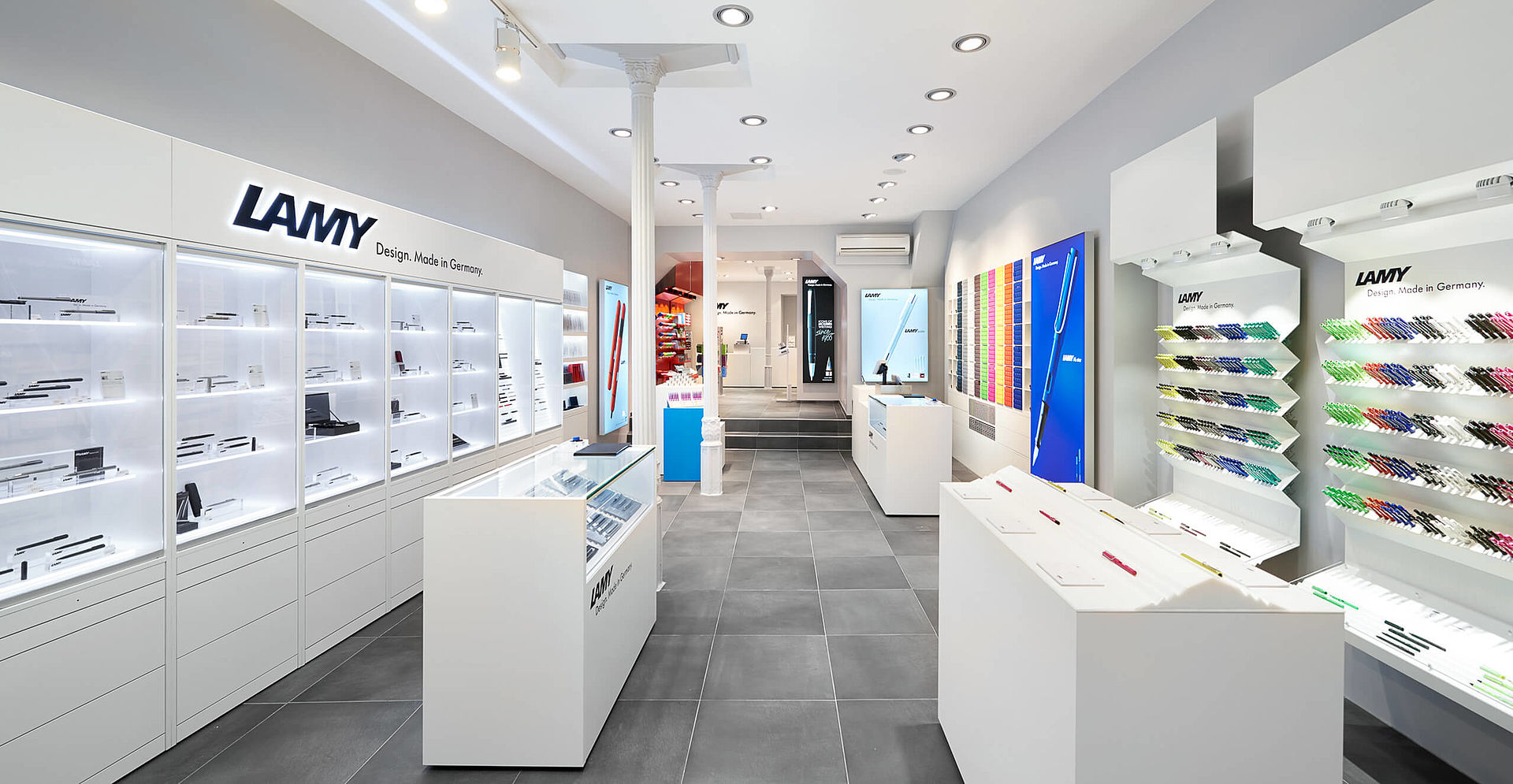
Dilip Doshi – A concept store is a statement that Lamy believes in letting its customers have a visceral and physical experience.
In India, we have created Lamy concept stores to showcase the story of the brand. We want it to be a kind of a cultural meeting place, a place to wave the brand flag.
FPAI: Working in India and selling in India comes with its own challenges.Most global companies have to make some modifications / changes in the way they approach India.Has Lamy had to do anything radically different from what you do in other parts of the World?
Dilip Doshi – We have not really had to do anything drastic. Much of this has to do with the fact that the Indian market itself has changed a lot in the past few years.
We are focusing on building proper awareness of the brand and the products and want to communicate the true value and ethos of the brand.
The range that Lamy has is huge, in terms of colours and much of the stuff is very collectible.
While most of the challenges have eased off, we do have the one challenge of lack of retail infrastructure to contend with.
FPAI: What role do you see the user community or the enthusiasts group playing in making fountain pens more accessible to the general public?
Lamy: There are two areas where we see enthusiasts playing a key role.
- Disseminating information in an unbiased way
- Making people aware of the value of handwriting and getting people back into the hobby
People see enthusiasts and influencers as a source of trusted information and that goes a long way in helping them make their choices.
FPAI: Other brands have made active engagements with the users/fans/enthusiasts. We had the Pelikan Hub a couple of days ago. What plans, if any, does Lamy have to interact and engage proactively with the user community?
Lamy : In our opinion, Pelikan has maybe come up with their own style of engaging with their end customers.
At Lamy, we believe in engaging in a whole different way. We have calligraphy workshops and our officials attend family festivals in many countries.
We also have our concept stores and flagship stores.
At the end of the day, we are a lifestyle, not just a pen.
FPAI: If it is not confidential, could you tell us what can we expect next from Lamy in terms of new products?
Lamy: Yes, of course, we have a new high-end/premium writing instrument slated for release in 2022. This pen is already in design and prototyping for the last 4 years.
While we are primarily an analogue company, we are also working on a digital writing device for Samsung devices in Korea.
We have a complex process of moving from a need to an idea to a product.
- The entire development process is divided into 141 work stages.
- There are 21 stages prior to the prototype model and 38 until the design is “frozen” and no further changes are allowed to the design.
- Then comes the implementation stage where all commercial, technical, production-related, and logistical issues are results.
- The final product is ready for release after these 141 stages.
So, it takes time, but the process is critical as we believe that “Lamy products should shape the market, and not follow it.”
Note: The questions were answered by Thomas Trapp in German and kindly translated for us by Karl Siegel. There were inputs from Dilip Doshi about aspects specific to India and also giving the perspective of a strategic partner. We have called out these comments.
For More Information:
Lamy, Design. Made in Germany video –
Lamy Dialog 3 Urushi –
Lamy Thinking Tools Exhibition videos – https://www.youtube.com/watch?v=00kiDwjc4kI
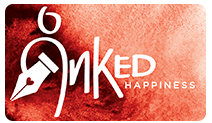
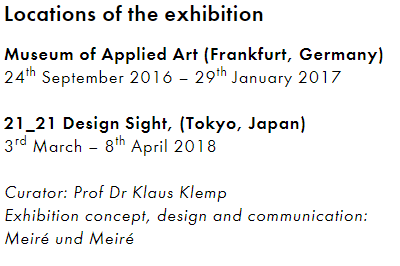
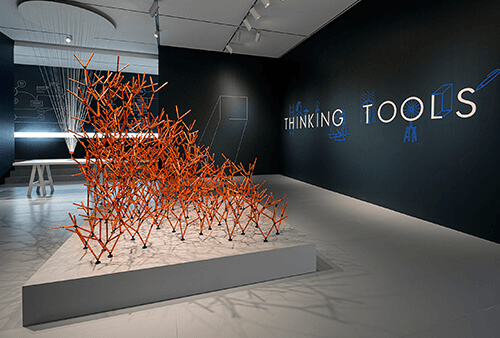
Well elaborated interview. Learned a lot about Lamy.